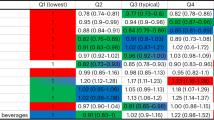Abstract
Humans can be exposed to lead through food, drink, various occupations or hobbies and also some cosmetics1,2. The contribution of these different exposures to the total body uptake varies between individuals and groups but it is generally accepted that food and drink are the major sources of body lead1. On average, lead from water contributes markedly less to total intake than does lead from food2. It has been suggested, however, that when average lead in water rises above 0.1 mg l−1 the intake from water begins to match or exceed that from food2. We have previously reported3 that the mean blood lead levels in mothers and children on a housing estate with lead water pipes were over twice as high as those on an adjacent estate using copper pipes. Here we report that the blood lead levels, even when raised, remained very stable when lead exposures were unchanged. The removal of the lead water pipes produced a drop of approximately 50% in mean blood lead levels, reducing them to levels comparable to those on the copper piped estate. No other changes in lead exposure could be found to explain the variations in blood lead levels between the estates, and therefore the possibility of the large contribution of water lead to blood lead should be considered where the conditions described below are known to occur.
This is a preview of subscription content, access via your institution
Access options
Subscribe to this journal
Receive 51 print issues and online access
$199.00 per year
only $3.90 per issue
Buy this article
- Purchase on Springer Link
- Instant access to full article PDF
Prices may be subject to local taxes which are calculated during checkout
Similar content being viewed by others
References
Department of Environment Pollution Pap. No. 2 (HMSO, London, 1974).
Department of Environment Pollution Pap. No. 12 (HMSO, London, 1977).
Elwood, P. C., Thomas, H. & Sheltawy, M. Lancet i, 1363 (1978).
Water Research Centre Technical Rep. TR28 (Water Research Centre, Medmenham, 1976).
Water Research Association Technical Memo. TM56 (Water Research Association, Med-menham, 1970).
Clayton, D. G. Lancet ii, 201 (1976).
Moore, M. R., Meredith, P. A., Campbell, B. C., Goldberg, A. & Pocock, S. J. Lancet ii, 661 (1977).
Elwood, P. C., St. Leger, A. S. & Morton, M. Lancet i, 1295 (1976).
Akers, J. & Fellows, R. Envir. Hlth 87, 148–152 (1979).
Author information
Authors and Affiliations
Rights and permissions
About this article
Cite this article
Thomas, H., Elwood, P., Welsby, E. et al. Relationship of blood lead in women and children to domestic water lead. Nature 282, 712–713 (1979). https://doi.org/10.1038/282712a0
Received:
Accepted:
Issue Date:
DOI: https://doi.org/10.1038/282712a0
This article is cited by
-
Lead contamination of public drinking water and academic achievements among children in Massachusetts: a panel study
BMC Public Health (2022)
-
Determination of sources of lead in tap water by inductively coupled plasma mass spectrometry (ICP-MS)
Journal of Radioanalytical and Nuclear Chemistry Letters (1993)
-
Evidence of a fall in cord blood lead levels in South Wales 1984–85
Environmental Geochemistry and Health (1990)
-
Safety margins for lead in the general population
Environmental Monitoring and Assessment (1987)
-
Greater contribution to blood lead from water than from air
Nature (1984)
Comments
By submitting a comment you agree to abide by our Terms and Community Guidelines. If you find something abusive or that does not comply with our terms or guidelines please flag it as inappropriate.



